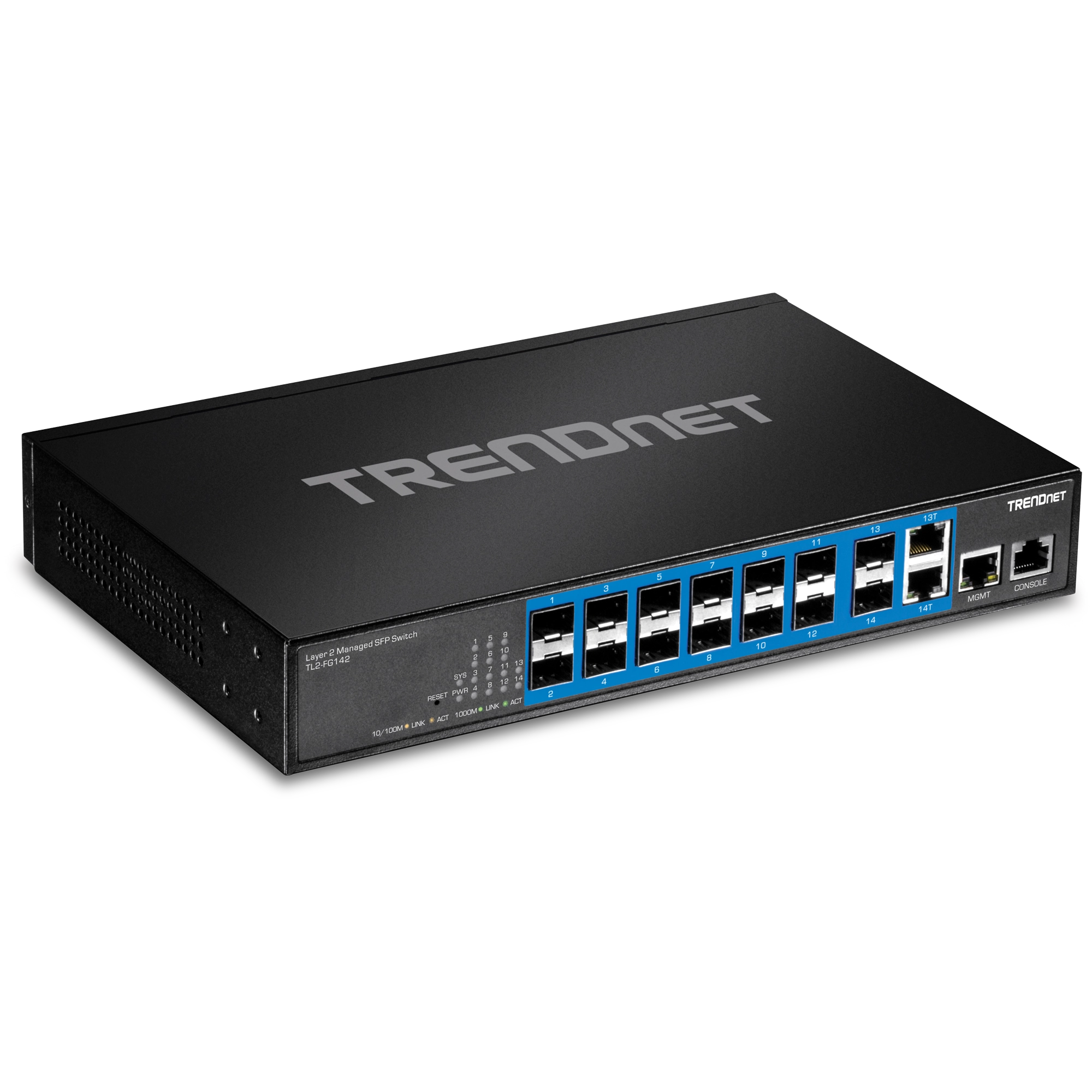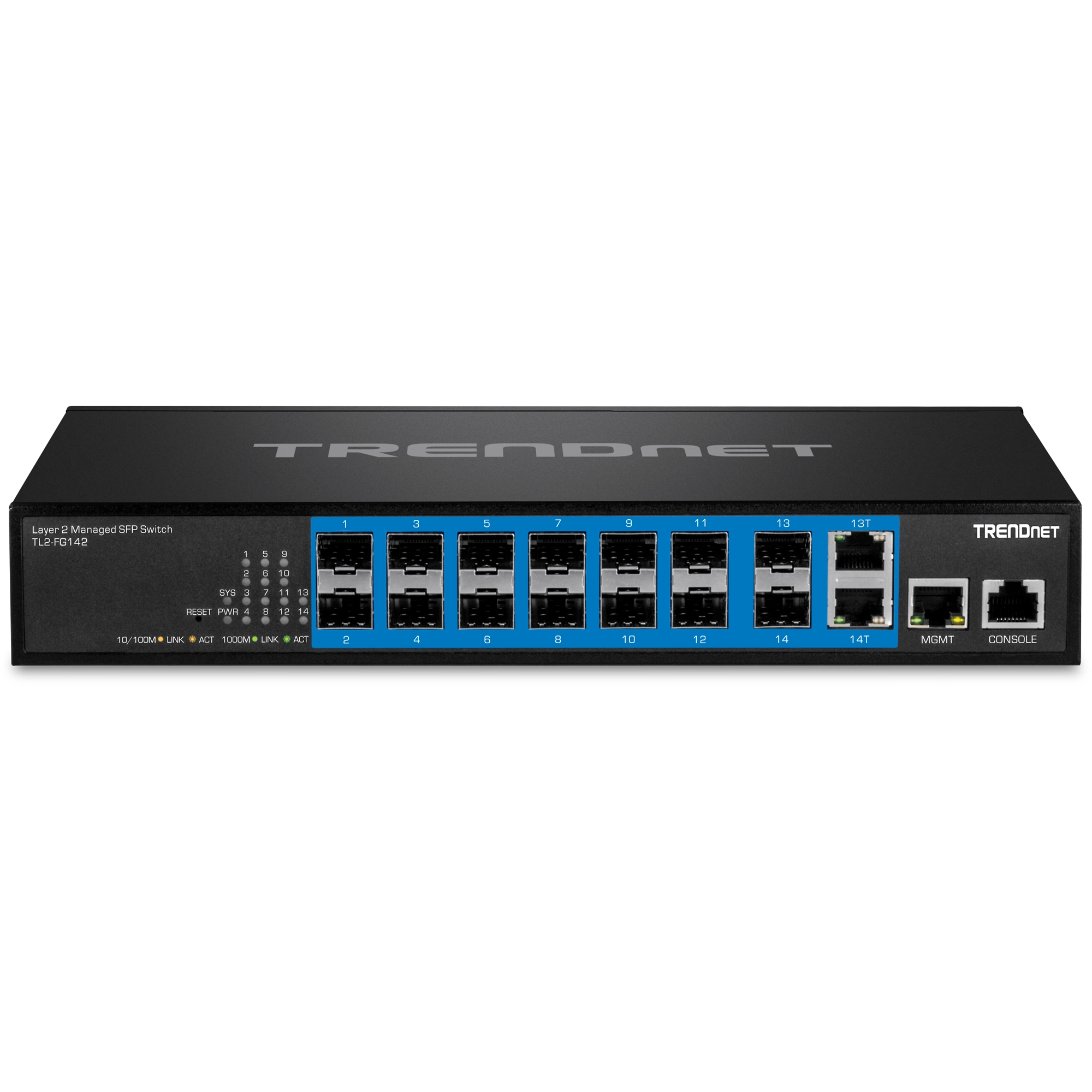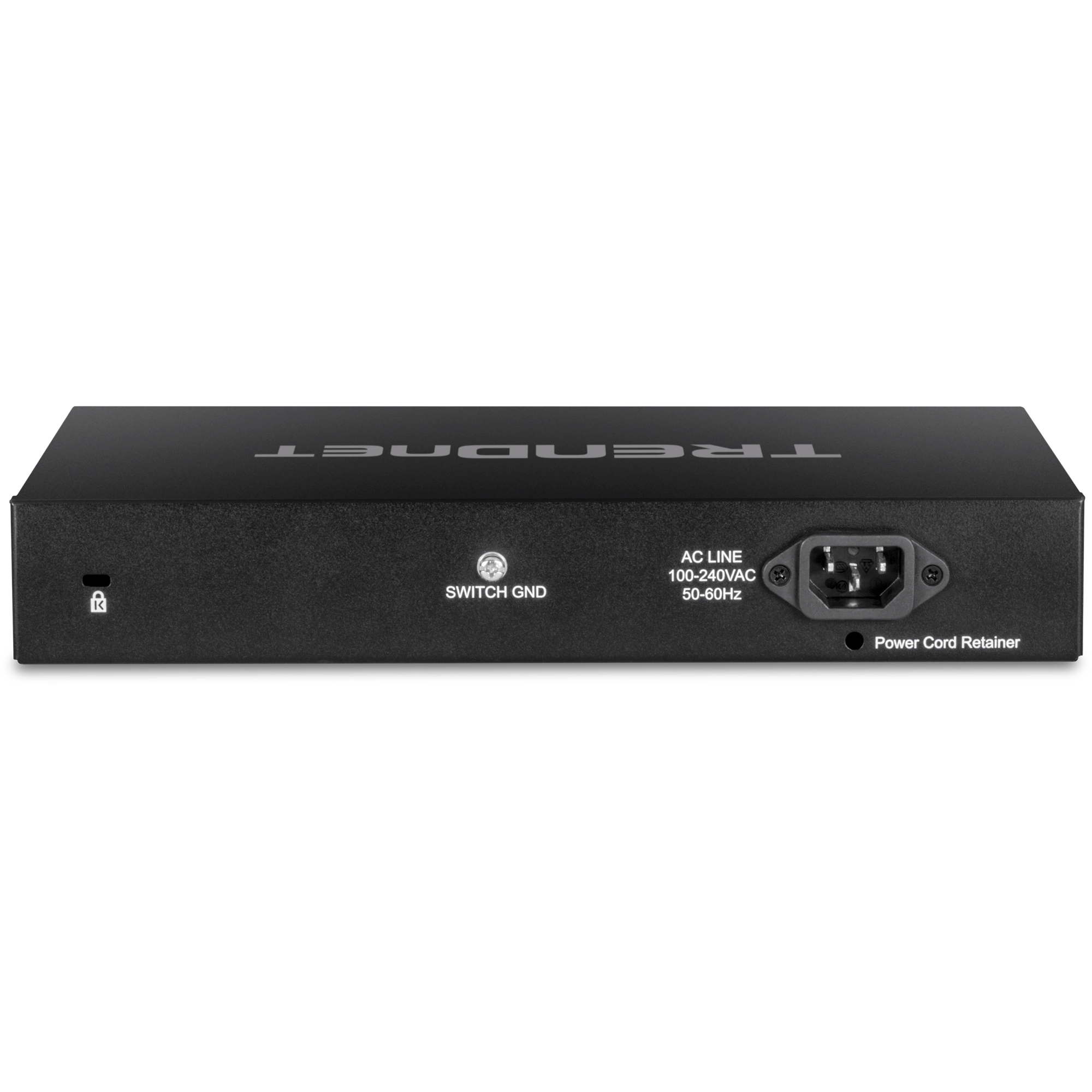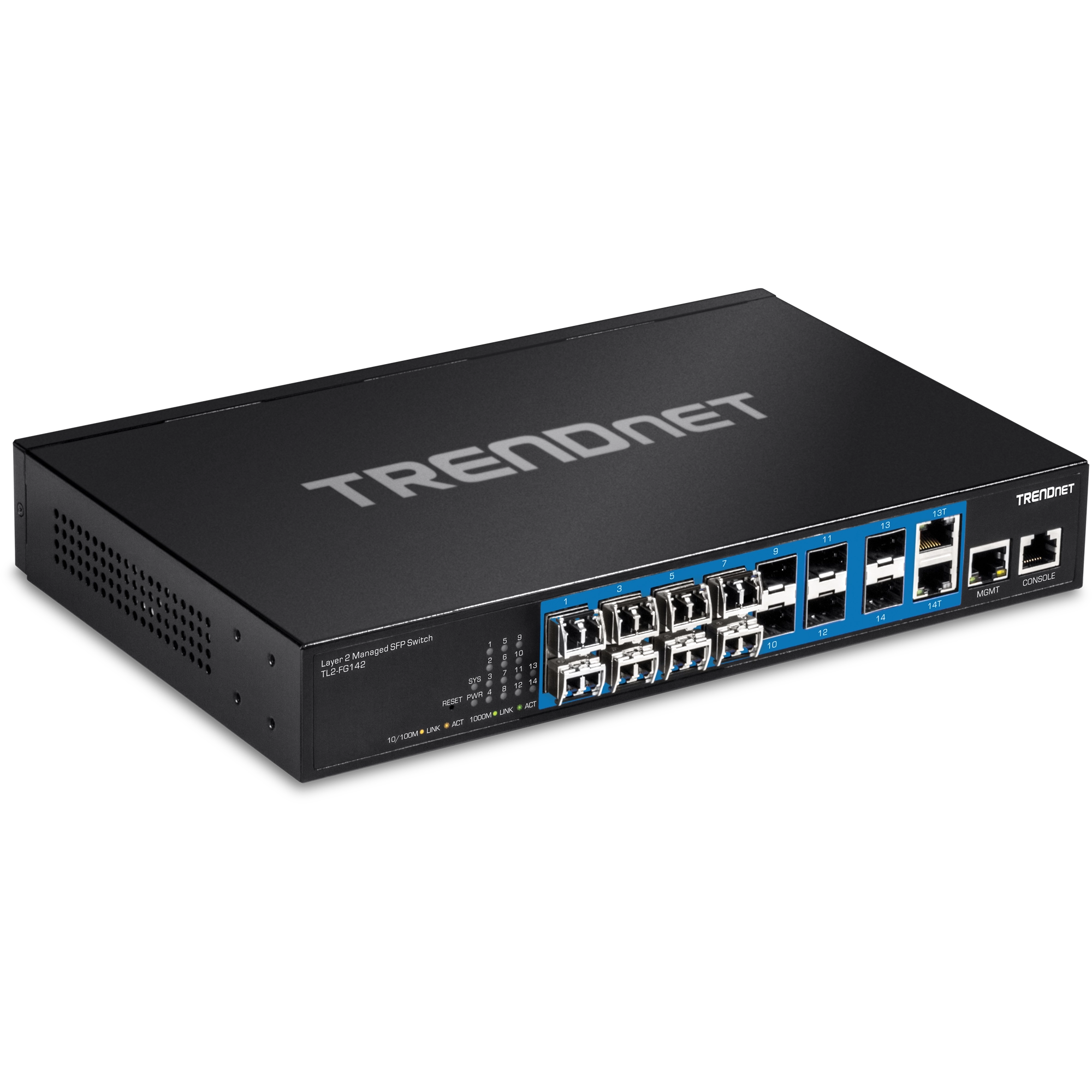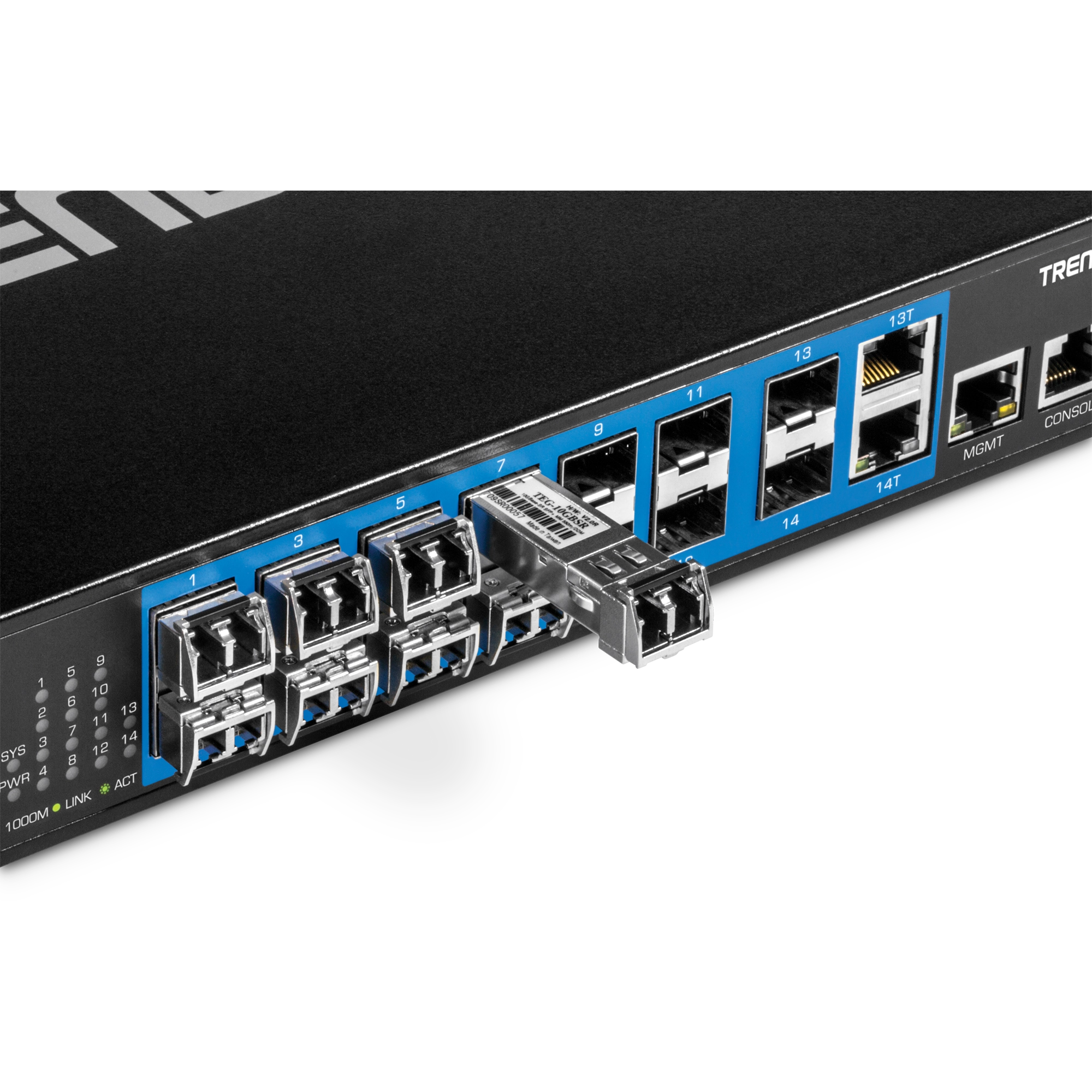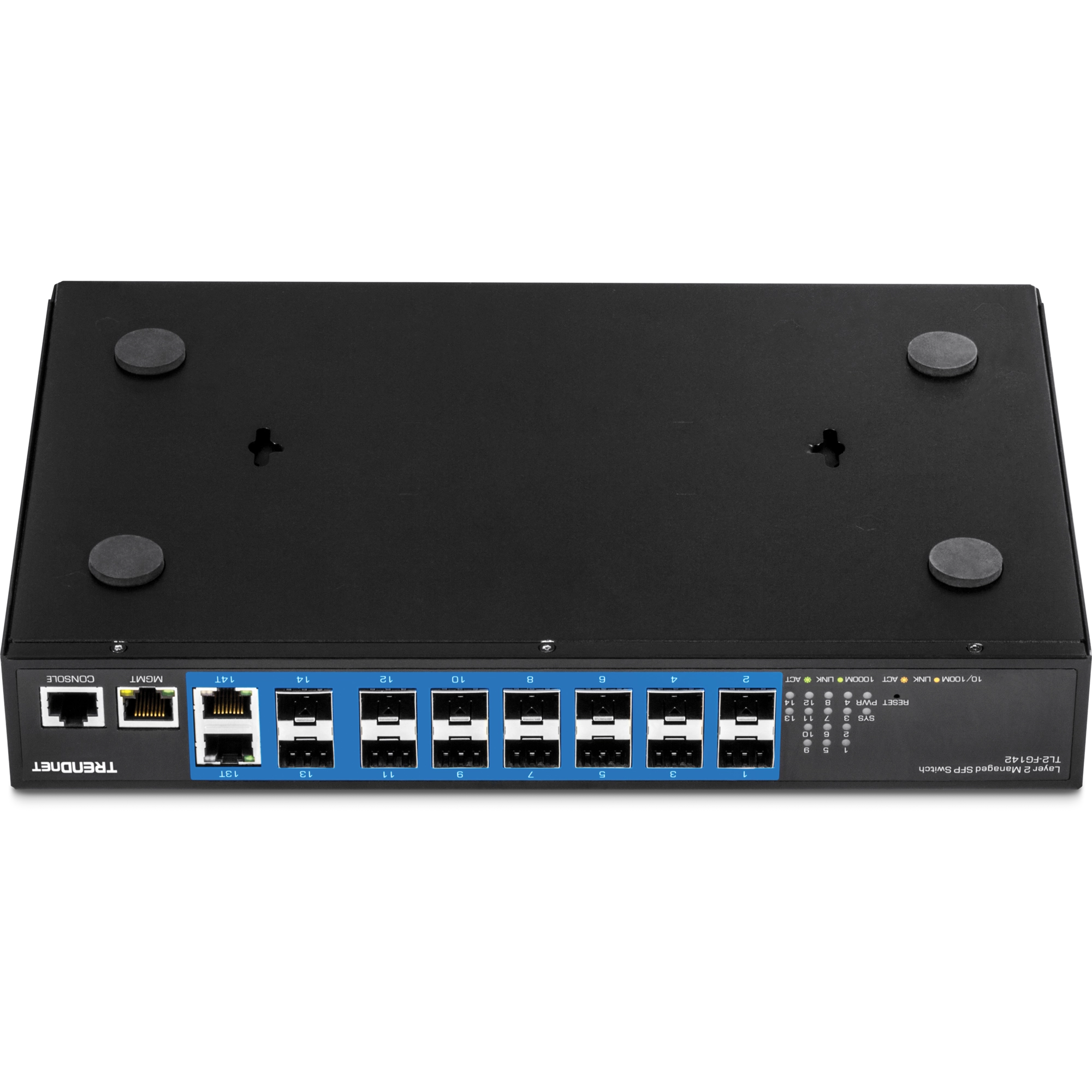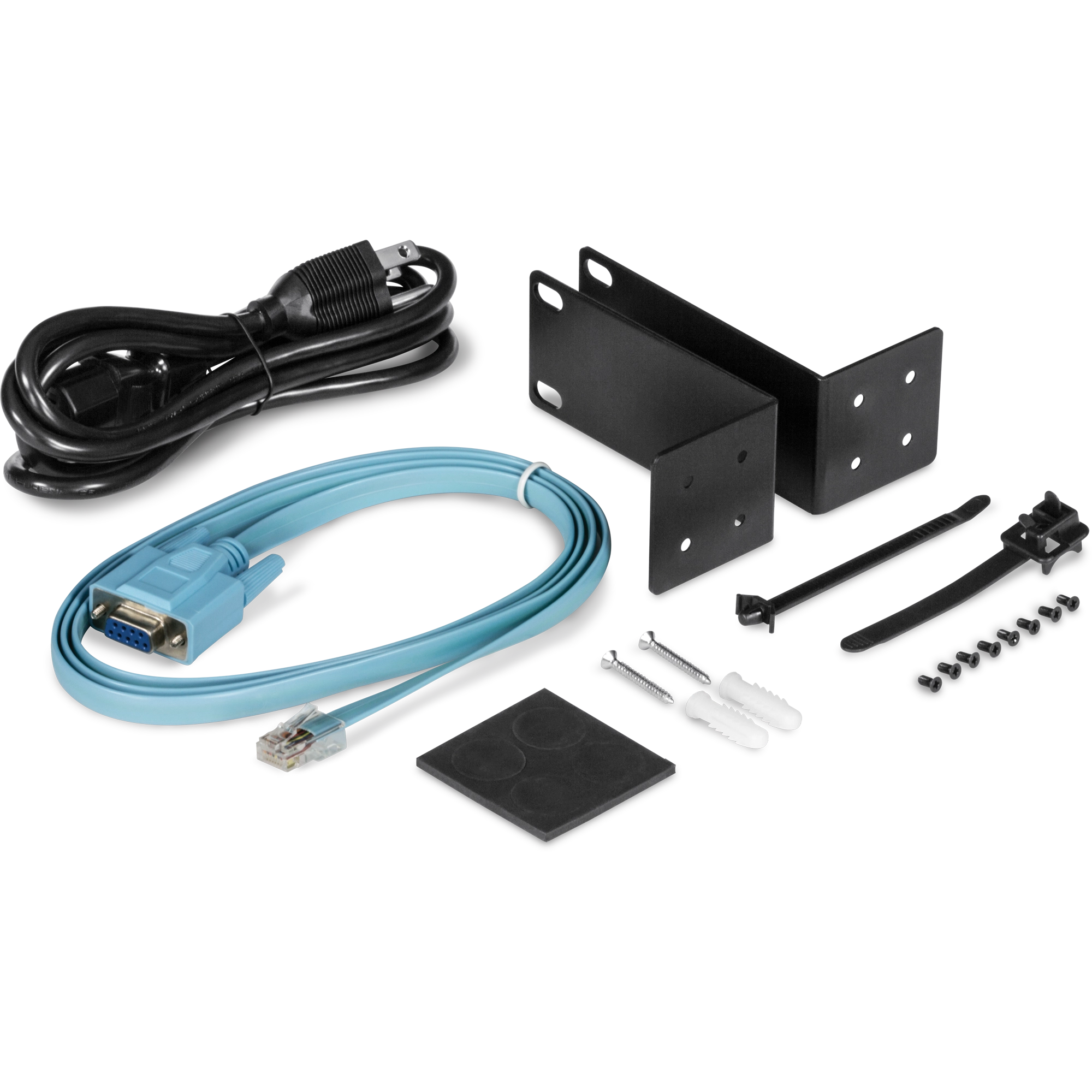14-Port Gigabit Managed Layer 2 SFP Switch with 2 Shared RJ-45 Ports
TL2-FG142 (Version v1.0R)
- 12 x SFP slots (100/1000Mbps)
- 2 x Shared Gigabit ports (RJ-45 or SFP slots)
- Web-based management interface
- Supports IPv6, LACP, VLAN, and IGMP Snooping
- 802.1Q tagged-based VLAN, Protocol, Private, and Voice VLAN support
- Q-in-Q VLAN tunneling and translation
- QoS with queue scheduling support
- Supports up to 32 IPv4/IPv6 static routes
- SFlow agent for layer 2 network analysis
- Bandwidth control per port
- 28Gbps switching capacity
- Connectivity Fault Management / OAM
- Supports 100/1000Base-FX fiber SFP modules
- Compatible with TEG-MGBRJ and TE100-MGBFX RJ-45 SFP modules
- Fanless design
TRENDnet's 14-Port Gigabit Managed Layer 2 SFP Switch with 2 Shared RJ-45 Ports, model TL2-FG142, delivers advanced management features and a 28Gbps switching capacity. This rack mountable IPv6-ready SFP fiber switch comes with an intuitive web-based user interface. Advanced traffic management controls, troubleshooting, and SNMP monitoring make this SFP switch a powerful solution for any SMB network. The TL2-FG142 provides 12 gigabit SFP slots and 2 shared gigabit ports (RJ-45 or SFP). Its fanless design is ideal for quiet environments that require silent operation. This SFP switch also features a modular design to accommodate both fiber SFP modules and RJ-45 copper SFP modules.

L2 Management
Included features such as Command Line Interface, OAM, sFlow, Private/Voice VLAN, Static Routes, and Link Aggregation provide a robust combination of SMB management options.

Integration Flexibility
SFP switch managed features include access control lists, tagged-based VLAN, IGMP snooping, QoS, RMON, SNMP trap, and syslog for monitoring and flexible network integration.

Fanless
Fanless design is ideal for quiet environments that require silent operation.
_1.png)
_1.png)
Hardware Design
SFP switch provides 12 gigabit SFP slots, 2 shared gigabit ports (RJ-45 or SFP), a management port, a console port, 28Gbps switching capacity, a built-in power supply, and rackmount brackets
Fanless
Fanless design reduces energy consumption and operating noise
IPv6 Ready
This SFP switch supports IPv6 configuration and IPv6 neighbor discovery
IP Routing
Supports up to 32 IPv4/IPv6 static routes
Traffic Management
A broad range of network configurations are supported by: 802.1ax Link Aggregation, Asymmetric VLAN, 802.1Q VLAN, Voice VLAN, RSTP, MSTP, Loopback Detection, 802.1p Class of Service (CoS), port bandwidth management, and QoS queue scheduling
Access Control
SFP switch features access controls such as ACL, MAC/port filtering, 802.1X, TACACS+, and RADIUS
Monitoring
sFlow, RMON, SNMP, SNMP Trap, Port Mirroring, and DDMI support
| Standards |
|
|---|---|
| Device Interface |
|
| Data Transfer Rate |
|
| Performance |
|
| Management |
|
| Monitoring |
|
| MIB |
|
| Spanning Tree |
|
| Link Aggregation |
|
| Quality of Service (QoS) |
|
| Storm Control |
|
| VLAN |
|
| Carrier Ethernet / OAM |
|
| Link Protection |
|
| L3 Features |
|
| Multicast |
|
| Access Control |
|
| Power |
|
| Fan/Acoustics |
|
| MTBF |
|
| Operating Temperature |
|
| Operating Humidity |
|
| Dimensions |
|
| Weight |
|
| Certifications |
|
| Warranty |
|
PACKAGE CONTENTS |
|


